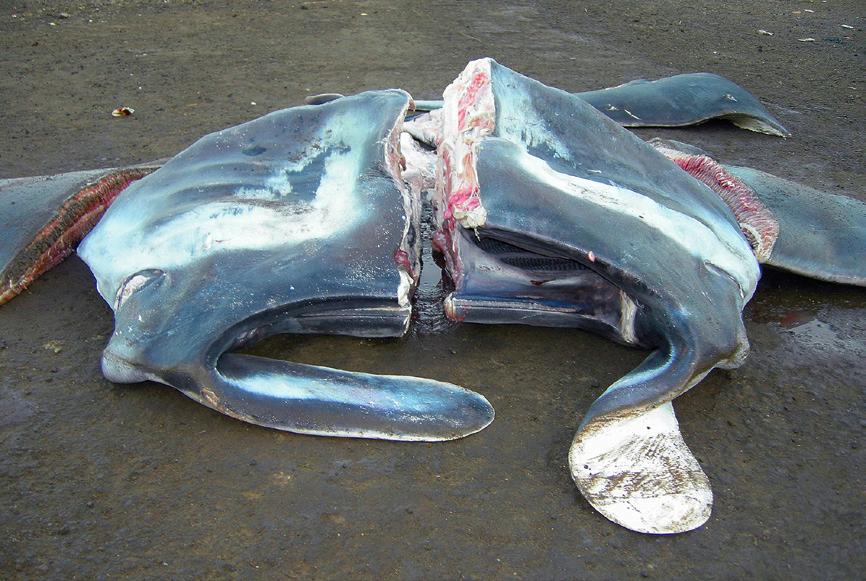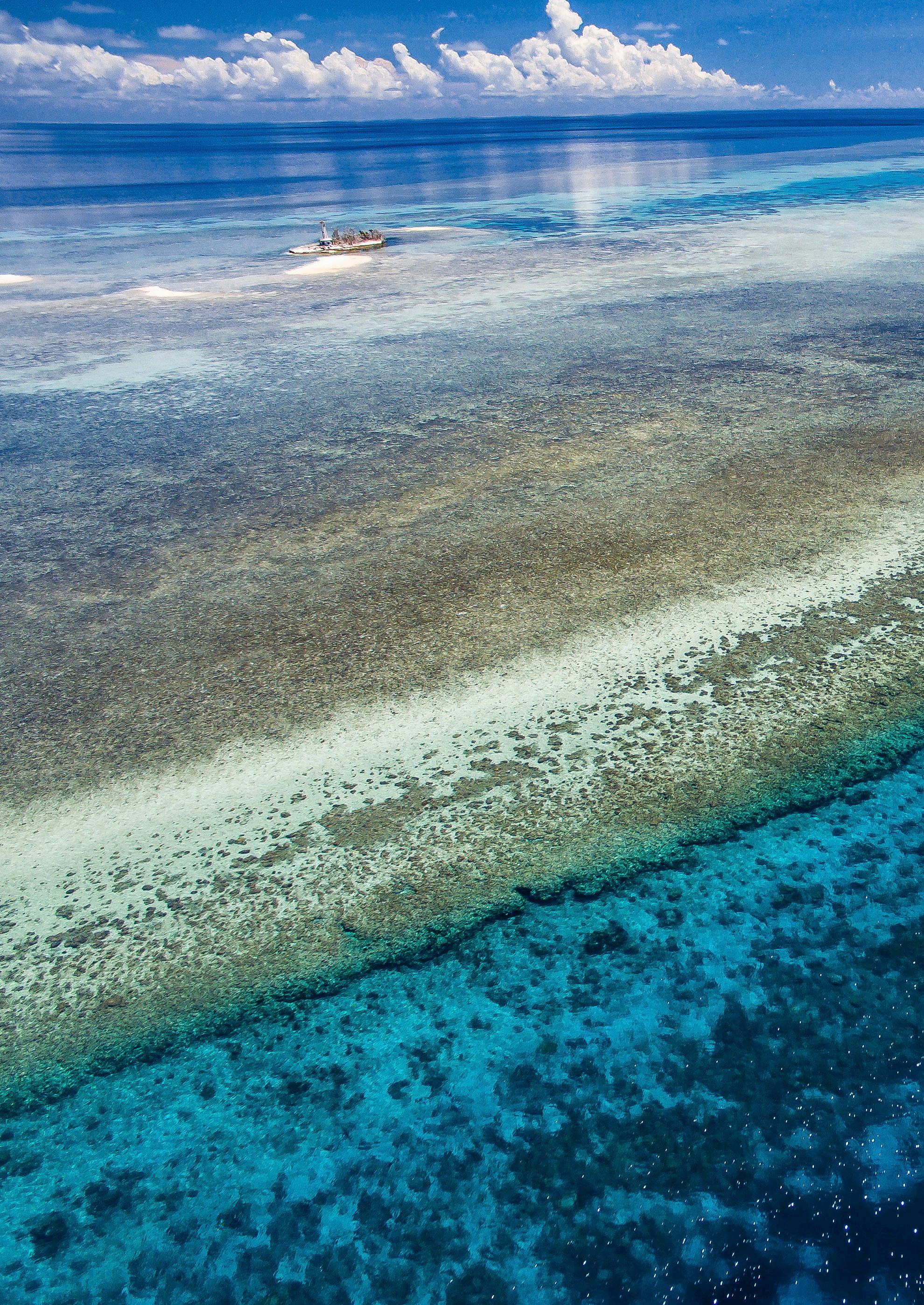
11 minute read
Whispering Whale Sharks
FEATURE WINSTON COWIE
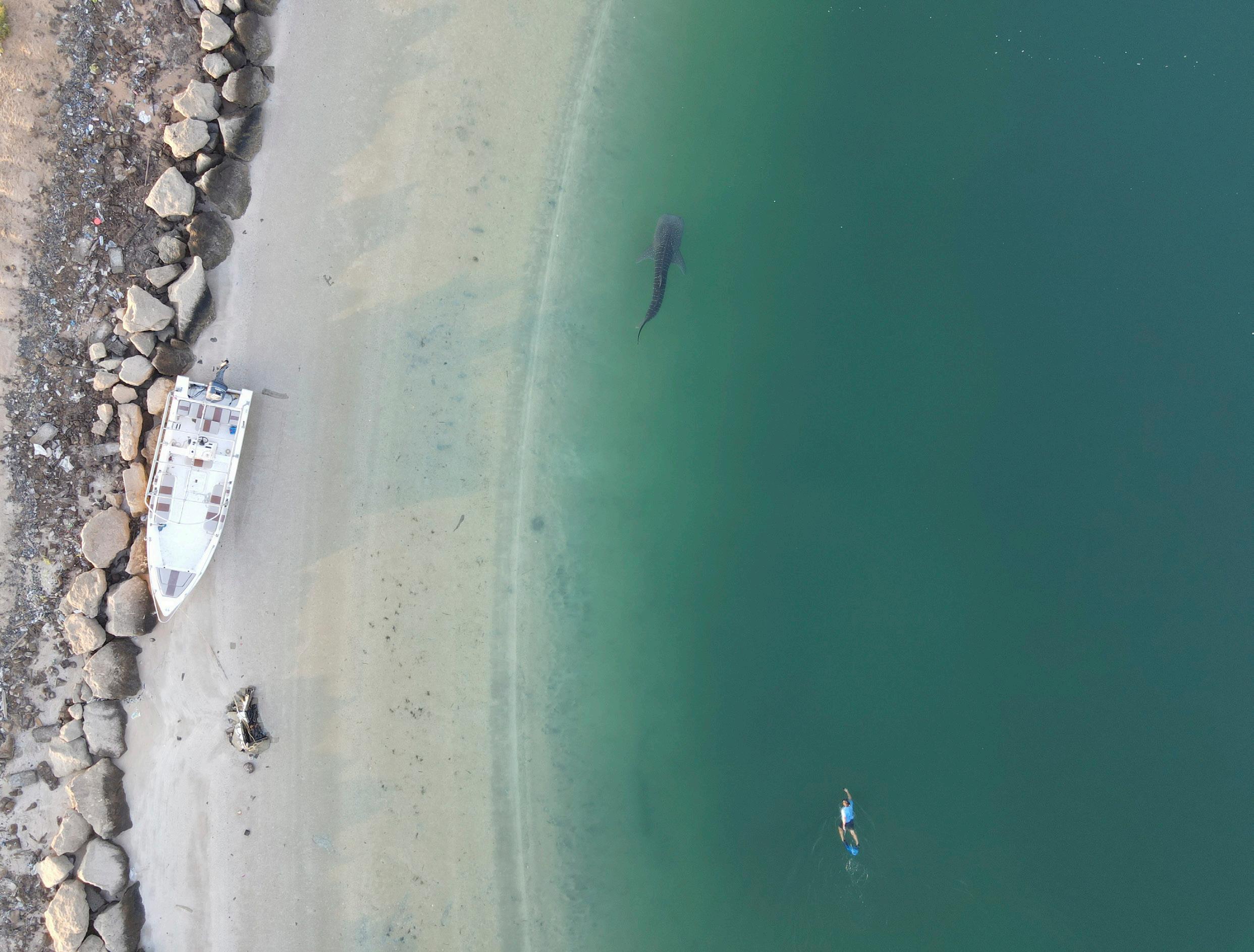
Photo by Hind Al Ameri.
2020. What a year! The year the corona pandemic changed the world.
In Abu Dhabi, the majority of residents and citizens stayed home for the summer, unusual in normal times given it can be up to 50 degrees Celsius at times. People stayed indoors and kept to themselves, their families, their bubbles. Stayed safe.
And then the weather changed and people began to venture outdoors, wearing masks and keeping a social distance.
After such a long period with limited wider interaction, people were a little uncertain and had become cautious when interacting with others.
And then, in the Al Raha community of Abu Dhabi, something changed. Something wonderful happened. The community were visited by the biggest fish in the sea, a Whale Shark. Not one, but two.
Every year or second year, we might get one whale shark visiting the UAE where it is spotted in a marina, or circumnavigating Abu Dhabi island. But they are generally fleeting visits – they might be seen swimming past a boat, a promenade, or the corniche.
We are talking about one whale shark in the whole of Abu Dhabi Emirate, every year or second year. This is rare.
2020 was different. Twenty kilometres in from Abu Dhabi’s Arabian Gulf facing beaches – the likes of the Corniche and Saadiyat, right on the inside of Abu Dhabi’s archipelago, in the canal between Al Zeina and the iconic Aldar building, two whale sharks appeared. As if by magic.

Photo by Maitha Al Hameli.
The community flocked to the side of the canal to get a glimpse of these magnificent creatures with their characteristic brownish red and starry white spots.
Whale sharks (Rhincodon typus) are the largest shark, and indeed largest of any fish alive. They are endangered, and while there are no robust population estimates, a best guess is an estimated 7,000 left in the wild. They are long-lived and can live up to an age of 150 years and are the gentle giants filter feeding mostly on plankton. On average they grow to around a whopping 8-9 metres and they are recognisable by their unique spotting along their bodies.
And here in Abu Dhabi we had two! A juvenile male – 4 metres long and estimated to be around 10-15 years old, and a larger mature 6-7 m male. They both seemed to follow the same pattern, swimming in a gentle circular pattern, between two bridges – the bridges 200 m apart. They would swim close to the side of the canal, up one side, then when they reached the bridge, gently turn and head back down the other side until they reached the other bridge, and then again and again.
The larger whale shark disappeared after a few days. The juvenile 4 metre male stayed around.
It was a dream. Imagine, you spend your whole life dreaming of an encounter with this endangered species, the largest fish in the sea, something that 99.9% of the time you would need to travel for in order to be able to see one – within the region to the Musandam or Damaniyat Islands in Oman, yet here they were in Abu Dhabi’s canal in the most unlikely of places.
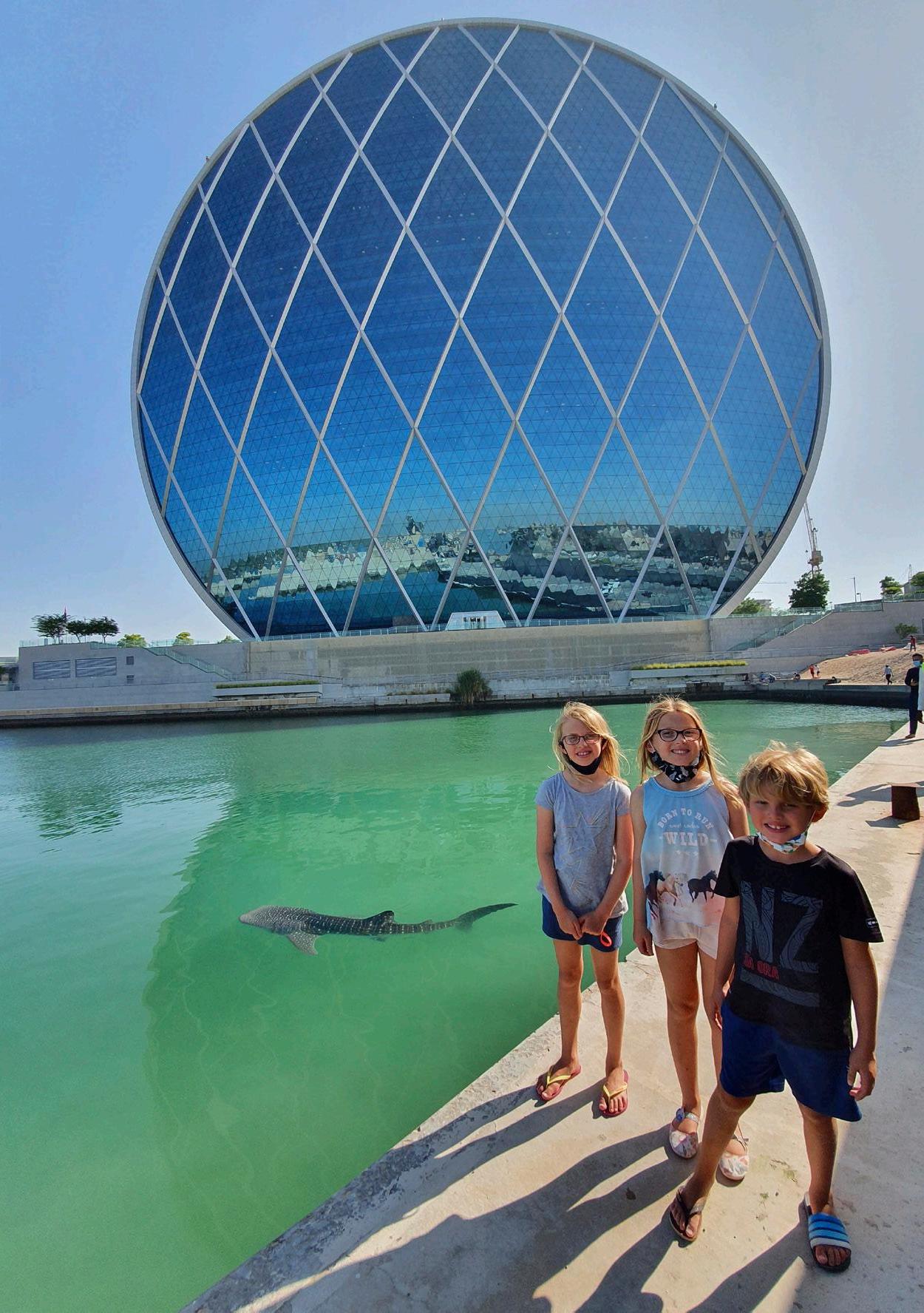
Photo by Winston Cowie.
Our team did regular checks on the whale shark, and the one thing we noticed from monitoring him, was that his eyes were always open.
I think that is one thing I have noticed in diving over the years – whether it be a seven-gilled shark in Fiordland, New Zealand; or green turtles and humpback dolphins off Butinah in Abu Dhabi – if you are relaxed and nonthreatening – the sea creatures are just as interested and curious about you, as you are them. Sometimes they instigate the interaction, as it appeared in this case.
At times the young whale shark would disappear for a few days and no one would know where he was. On one occasion he had inadvertently picked up fishing gear – a couple of hooks and a sinker that had become tangled on his fin. This was likely from someone who had left a line fishing during the day in the hope of catching a fish. Seeing it, our team responded – we jumped in, free-dove down underneath him, checked the mouth – no hook – and then we saw it stuck in his pectoral fin. We pulled it out and untangled the other hooks and sinker from his fin before returning to the surface. social distance air high fives.
Another time, after he disappeared for a week, he came back with another fishing hook and plastic bag on his tail. We got on his trail – it was dusk and we felt that he was heading on his normal route back towards the Aldar Building. So we started walking the 5 km journey along the side of the canal. Every once and a while, we would ask someone if they had seen the whale shark, and they would reply, yes – 10 minutes before, yes five minutes before. And on it went. By this time it was nearly dark and we had covered 4.5 km. We saw that swish of his tail up ahead in the distance. The water was calm. We ran towards him and looked down. Indeed there was a plastic bag on his tail and a fish hook he had inadvertently got tangled on. We ran ahead of the whale shark and down the ladder where we waited for him to pass. In the growing gloom he swam passed and as he did, we gently grabbed onto his tail and pulled loose the hook and plastic bag. It came free easily enough, and off our whale shark kept swimming.
After seven weeks, the whale shark began to spend most of his time around the Aldar HQ building. When freediving with him and reviewing the footage afterwards, we noticed that he had lost some weight. Through our Memorandum Of Understanding on environmental cooperation and wildlife conservation with the National Aquarium – Abu Dhabi, and after consulting experts around the world who concurred that he was indeed skinny, our teams decided to feed him some krill to strengthen him up before we attempted to move him back to sea.
Our whale shark was hungry. Seeing is believing. He gobbled down the balls of krill we were feeding him in front of Aldar HQ. What a marvelous experience for the community – a 4 m whale shark being fed and eating krill right in front of you. It was beautiful, and by this stage he had a team of juvenile golden trevallies who were keeping him company. Quite the sight. A whale shark, krill, golden trevallies, right there. Staring down his three foot wide mouth.
We fed him for about a week before we moved him. This was with a team of divers from the National Aquarium – Abu Dhabi and the Environment Agency – Abu Dhabi and with vessel support provided by Abu Dhabi Marine.
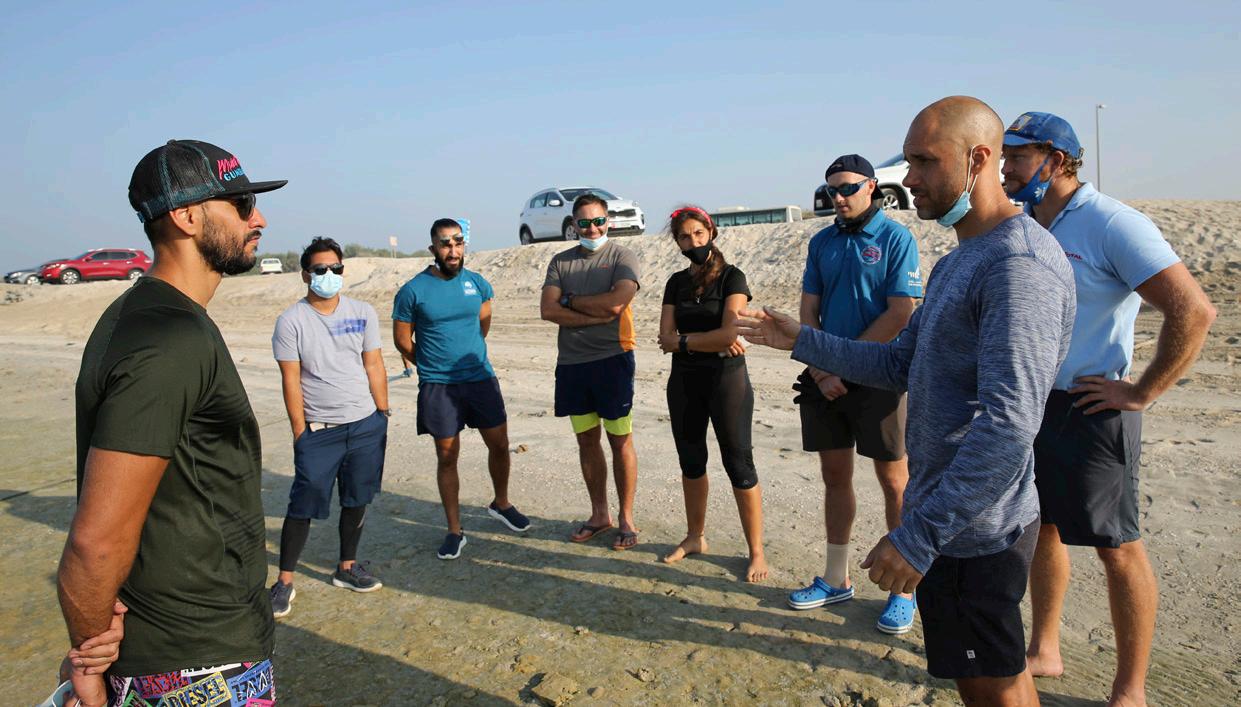
Photo by The National Aquarium, Abu Dhabi.
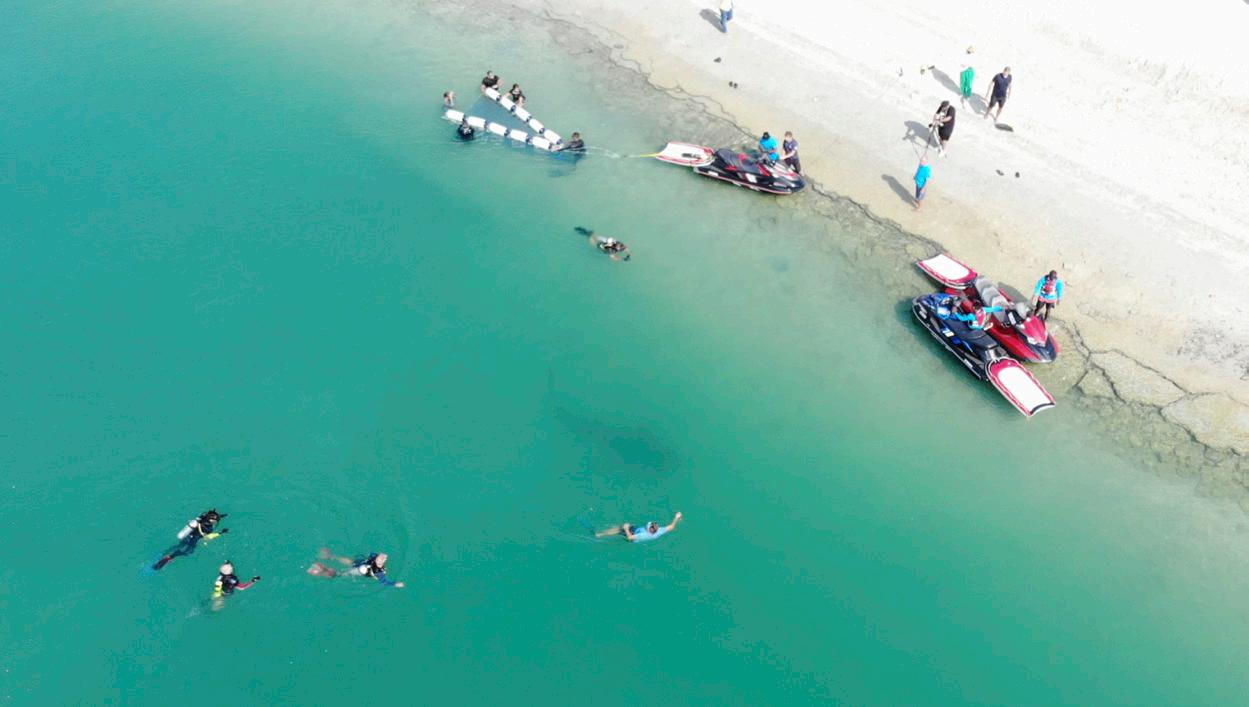
Photo by The National Aquarium, Abu Dhabi.
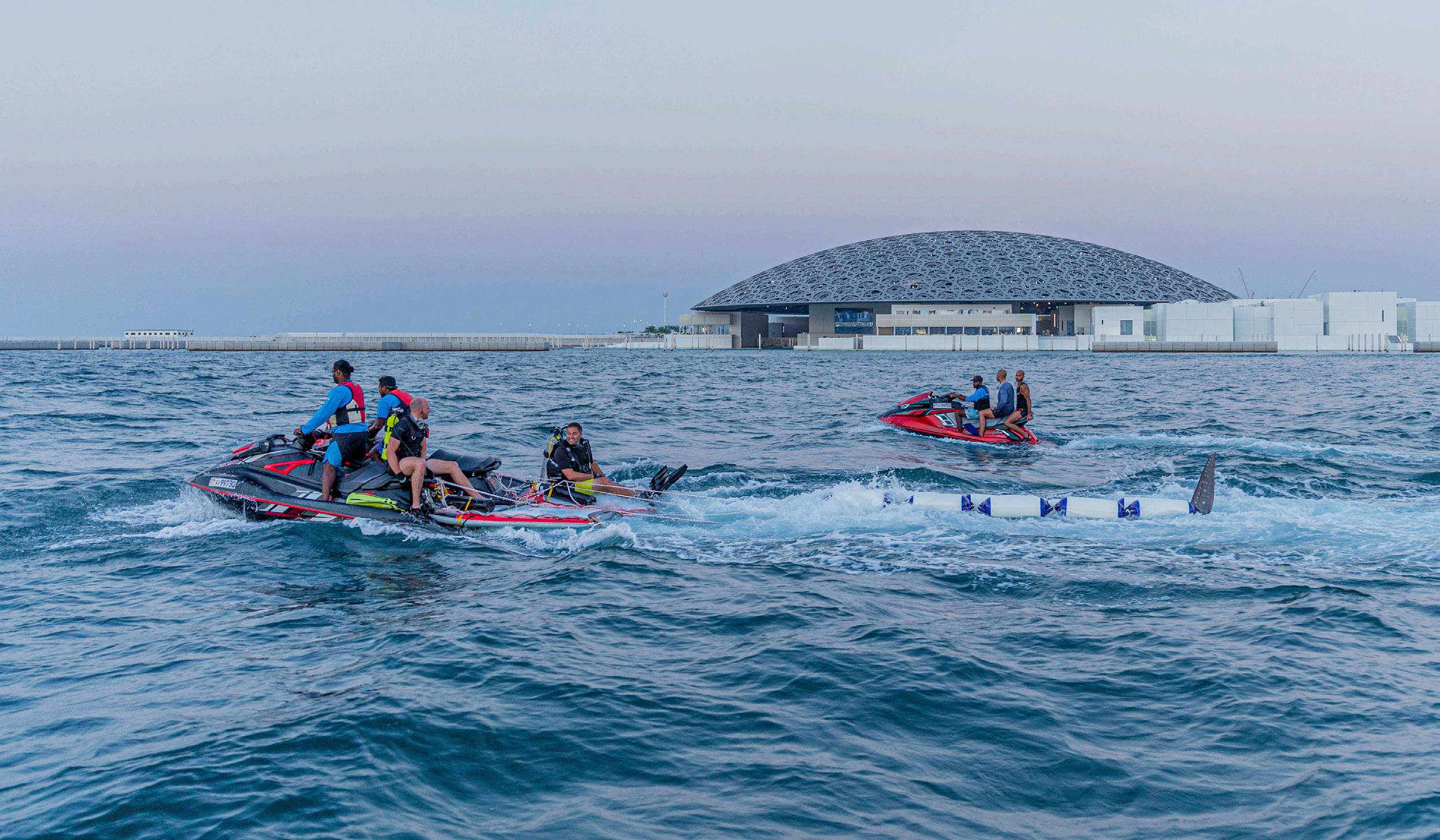
Photo by The National Aquarium, Abu Dhabi.
We moved him about one kilometre towards Samaliyah Island before he dove down into the deep. We felt good. We hadn’t touched him and he had swum off on his own steam.
There were sightings of a whale shark near the Corniche in the week that followed, in the Yas Island Channel, and then at Al Bahia Channel. Our EAD whale shark team went to investigate and found him in Al Bahia Canal, mid morning, 15 kilometres away. That afternoon as we headed to to Al Bahia to investigate further, we received a call from a member of the public saying that our whale shark was back at Al Raha. We were amazed. That was the fastest 15 kilometres ever swum, let alone by a whale shark. We checked on the shark at Al Raha – it was indeed our young male. Back after a week away.
There were some niggling doubts though. The next morning, we headed to Al Bahia just to be sure. We saw a whale shark right up the end of the canal and in the early morning, predawn, we slipped into the water. We got a big starry surprise. It was a different whale shark – a huge one – 6-7 metres long! In comparison to our other one, he was big and thick and had a massive block of a head on him. There was also a distinctive scar on his head. He looked strong and in good condition. It was the same adult whale shark we had seen 7 weeks earlier.
The Al Bahia Canal is a natural trap – it has a very narrow entrance that the water streams into at high tide and at low tide the entrance is very shallow. The whale shark was stuck in the canal. Once again with our colleagues from the National Aquarium and Abu Dhabi Marine, using a similar technique to the first Al Raha rescue, at high tide we manoeuvred him out of the canal. When our Al Bahia whale shark resisted, because of the current, we gently encouraged him on his way, and again, there was a feeling of elation to see him swim off out of the canal and into a larger canal that led out to sea. Rescue, round 2.

Photo by Winston Cowie.
Back to the Aldar building. We recommenced feeding our younger whale shark, then planned to take him from where he was, on a stretcher, all the way out the 20 kilometre journey to the Arabian Gulf facing coast of Abu Dhabi. We fed him daily at 10:00 am every morning for four days, and planned to move him on the fifth day. The team turned up ready. He wasn’t anywhere to be seen.
And then at 11:30 am, we were notified he had shown up at the Aldar Building. The triumvirate of organisations assembled – now all well acquainted with each other – the Environment Agency – Abu Dhabi, the National Aquarium – Abu Dhabi Team, and Abu Dhabi Marine. We placed the stretcher that Abu Dhabi Marine had prepared in the water and after persuading him with krill, closed the stretcher and towed him out to sea. The whale shark had a ready supply of oxygen on his stretcher and every few minutes we had divers check he was ok. What an amazing experience and really good team building between this wonderful team, now working together on their third whale shark rescue. By dusk we had moved him all the way out, past Sheikh Khalifa Bridge connecting Abu Dhabi and Saadiyat Islands, and out past the Louvre. The 20 kilometre journey had taken six hours. Out of sunlight, in the growing dark with no one watching, we released the whale shark and hooted at seeing him swim off into the deep. Success! We had successfully rescued two whale sharks. Or so we thought!
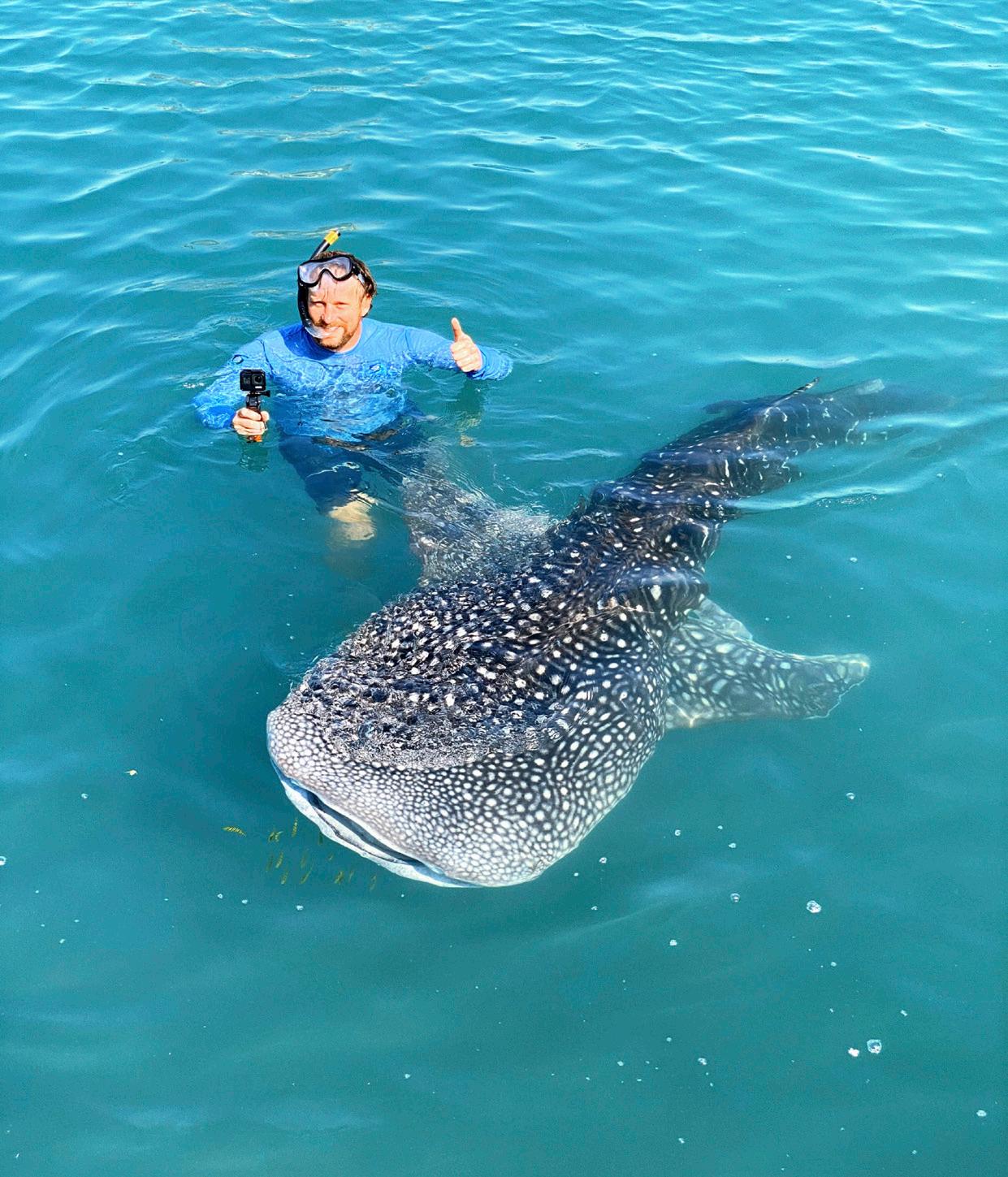
Photo by Hassan Al Hosani.
The next morning, Al Bahia reported that our big male was back in the canal. Imagine. Again! We headed there for a look. He seemed happy enough. For the next few mornings we met at Al Bahia and checked on the big fellow. He seemed in really good condition, but it was clear, he wasn’t able to swim out of the canal because of the strong current and shallow depth at low tide.
Using the same technique as the younger whale shark, the larger shark swam onto our stretcher. He fitted perfectly. We then towed him another 20 kilometres out into the Arabian Gulf. We had plenty of sunlight this time so we took him as far as we could go. When we released him, he was swimming so fast we couldn’t keep up with him.

Photo by Winston Cowie.
We had put a satellite tag on him too. Where would he go?
It was a funny feeling for all of us – the community – our team. The most incredible seven week whale shark journey was over. Or so we thought.
We received a phone call that a whale shark was back at Al Raha.
We went to investigate – the whale shark could have been anywhere in the world at that point, yet there he was – back where we began in the exact place we first saw him. Maybe he was saying good bye. As for our Al Bahia whale shark, our satellite tag tells us he is back out where he is meant to be. Right out in the middle of the Arabian Gulf.

Photo by Winston Cowie.
I feel that in a way we have learnt from these whale sharks. They have taught us to value nature; to value community; and about the threats abandoned fishing gear and plastics have on our oceans.
What an adventure. Whispering with whale sharks. In Abu Dhabi. Will they come back next year? I did hear a whisper that it would be nice if they did.






